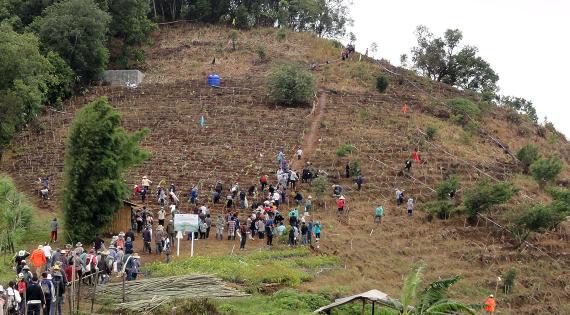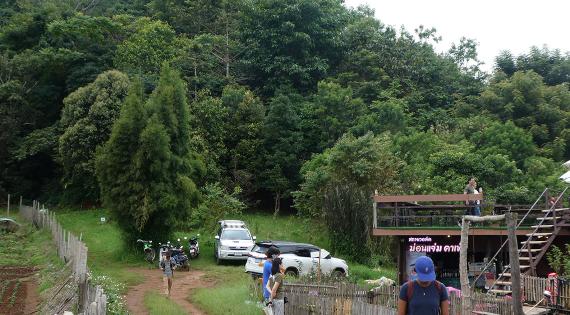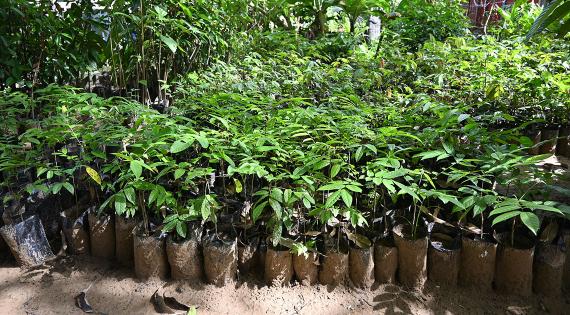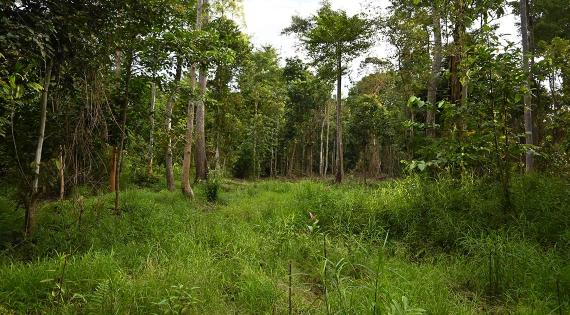On average, about half of trees planted in tropical and sub-tropical forest restoration efforts do not survive more than five years, but there is enormous variation in outcomes, new research has found.
The study analysed tree survival and growth data from 176 restoration sites in tropical and sub-tropical Asia, where natural forests have suffered degradation. The team found that, on average, 18% of planted saplings died within the first year, rising to 44% after five years. However, survival rates varied greatly amongst sites and species, with some sites seeing over 80% of trees still alive after five years, whereas at others, a similar percentage had died.
The findings are published today in the Philosophical Transactions of the Royal Society B: Biological Sciences.
Forest restoration is a powerful tool to tackle biodiversity loss and climate change, by locking away carbon and supporting important habitats. Reforestation projects are also used widely for carbon offsetting. While the main measurement used for many projects is the number of trees initially planted, the research shows that many of these trees are not surviving long-term. In some sites, survival rates were high, showing that with the right approach restoration has the potential to be successful.
About 15% of the world’s tropical forests are found in Southeast Asia and they are amongst the most carbon-dense and species-rich in the world, providing habitat for tigers, primates and elephants. However, in recent decades the region has also seen major deforestation, with forest cover reducing by an estimated 32 million hectares between 1990 and 2010.
The region has therefore become an important focus for forest restoration projects. The research – by an international team of scientists from 29 universities and research centres – is the first to bring together data to evaluate the long-term outcomes of restoration projects.
Dr Lindsay Banin, co-lead author based at the UK Centre for Ecology & Hydrology, said: "The large variability in survival we found across sites could be for a number of reasons, including planting densities, the choice of species, the site conditions, extreme weather events or differences in management and maintenance. Local socio-economic factors may also be important.
"What’s clear is that success is very site-dependent – we need to understand what works and why and share that information, so we can bring all sites up to the level of the most successful and harness the full potential for restoration. There’s likely no one-size-fits-all approach and restoration action should be tailored to local conditions. This will help ensure the scarce resources and land available to restoration are used to best effect."




